Writing a clear, concise resume is a superpower when you’re job searching. While most people walk up the hiring ladder, you put on your crimson cape and soar upwards at supersonic speed.
So, how can you make your resume stand out from the crowd? In this guide, we cover everything you need to know to write a spectacular resume from scratch. Follow our six steps towards success and propel yourself towards landing your dream job. Let’s get started.
Preparation
First things first, you need to do some preparation. Review the job posting and gather the essentials to ensure that you create a stellar resume. This step will make the rest of the process much easier.
Start out by looking at the job description and taking note of the criteria and expertise the hiring manager has listed. You should then match your qualifications and experience to the job.
Here’s a quick breakdown of the things that you will need:
- Complete list of your work experience and notable accomplishments
- Information about previous employers (including company names, locations, dates, etc)
- Extensive list of the hard and soft skills you may include
- Educational details for any certificates that you plan to include
- Honors, awards, and any voluntary experience that may be relevant
Choosing the right resume format
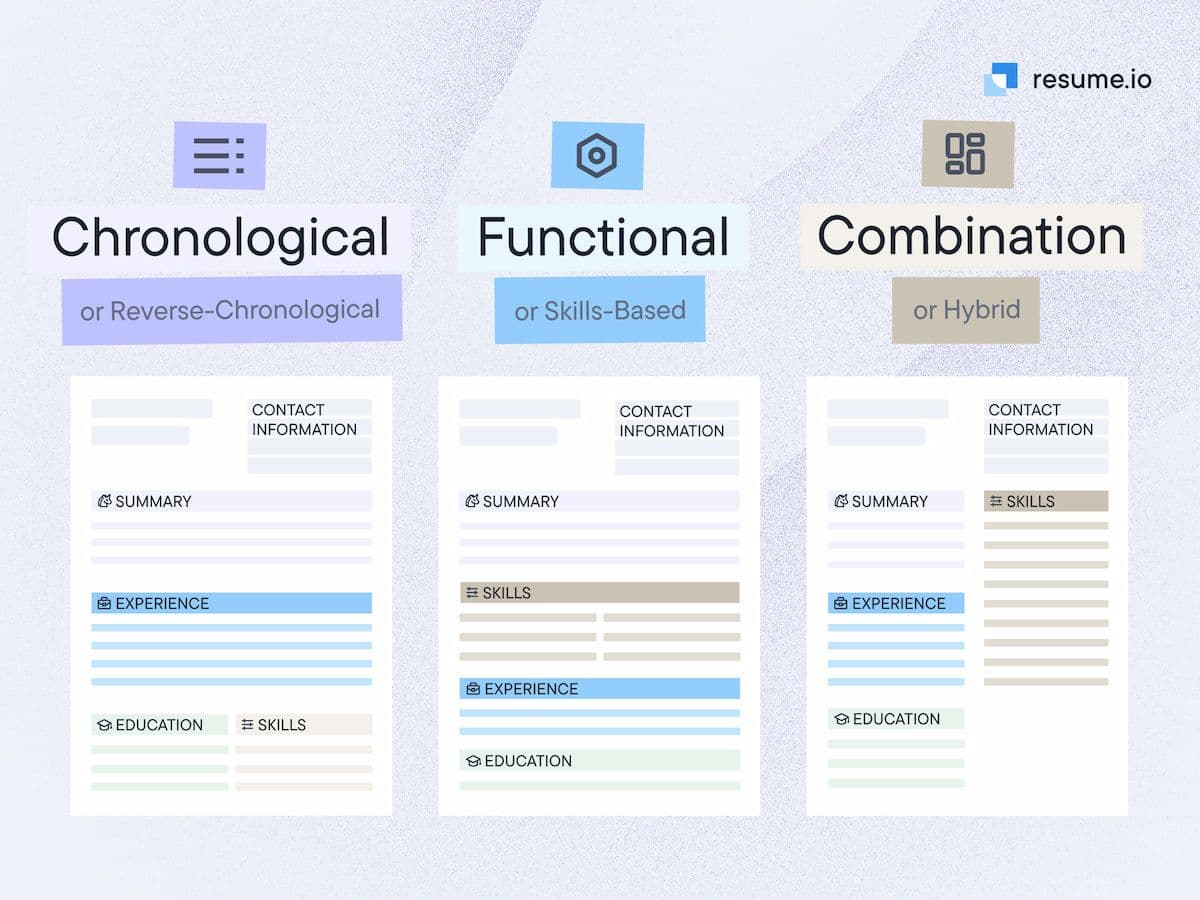
There are three main options to consider:
- Chronological Format (Reverse Chronological Resume) - Most popular: This is the most common format, where your work experience and qualifications are listed starting with the most recent. It’s typically recommended for most job applications.
- Functional Format (Skills-Based Resume): This format emphasizes your talents and skills rather than your work history. It’s ideal for those with less experience or those making a career change.
- Combination Format (Hybrid Resume): This option combines elements of both the chronological and functional formats, highlighting both your skills and work experience.
Selecting the format that best matches your background will help your resume stand out.
But don’t worry; our resume builder simplifies the process! You can easily drag and drop sections to rearrange them into your preferred resume format.
How to make a resume: step-by-step guide
Now that you have everything you need, it’s time to start making your resume. In this guide, we will cover six simple steps to help you along the way, as follows:
- How to add contact information
- Writing your professional summary or objective
- Detailing your work history and experience
- Including the right skills for the job
- Showcasing your education well
- Optional sections you may want to include.
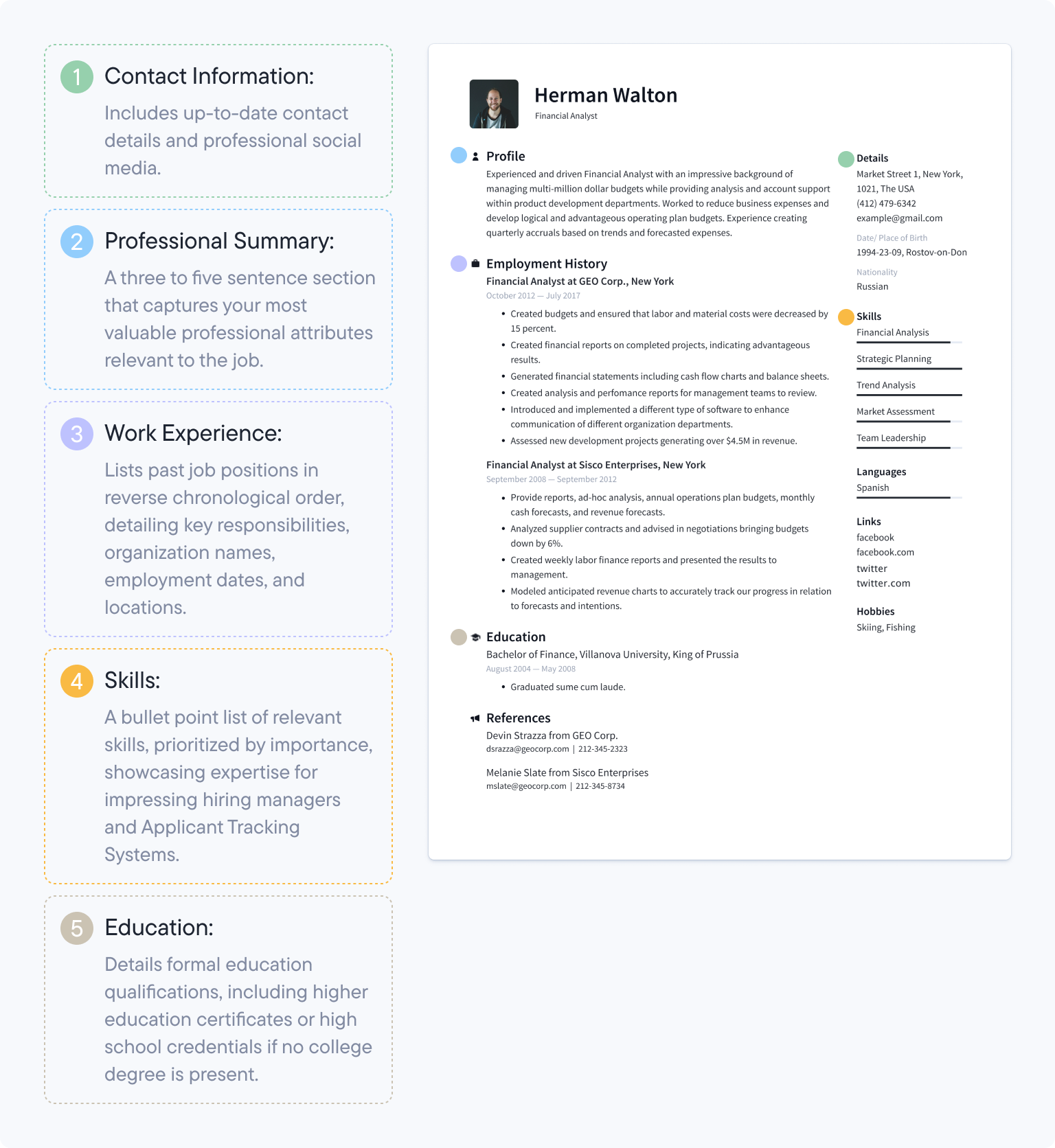
Step #1: Contact information
The first thing that you need to do is add your contact information. Your resume header acts as a business card, allowing you to quickly share these details with the hiring manager.
Ensure that you format this section clearly. Your number one priority is making sure the hiring manager can read this information. Here are the main elements you should include:
- Full name & title. List your first and last name. Plus the role for which you are applying.
- Professional email address. Make sure you use an email address that is suitable for work. You can use one that has your first and last name, for example.
- Phone number. Use a phone number that you use regularly. You should also make sure that the answer phone message is suitable for a professional environment.
- Location. You don’t need to list your whole address. This is outdated and potentially unsafe. List your city and state. Add ' Willing to Relocate,’ if applicable.
- LinkedIn. Include a link to your LinkedIn profile if it’s relevant. However, you should make sure that it is up to date and active before you do so.
- Portfolio. Include your GitHub or other portfolio links if they are relevant to the job.
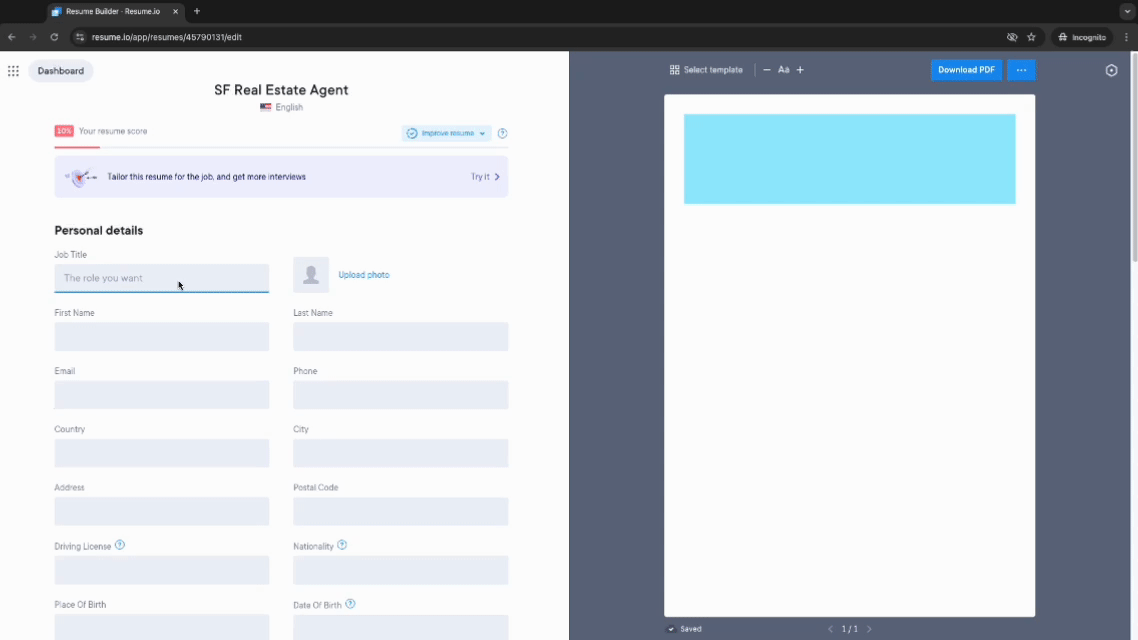
Don’t include:
- Date of birth. You don’t need to include this, as it can lead to age discrimination.
- Personal details. Marital status, social security number (a common job scam), passport number, etc.
- Photo. Generally not recommended for US resumes due to potential bias. Exceptions include modeling and acting roles. If added, use a professional headshot.

Bonus: If you want to stand out from the crowd, you may include a resume headline. This is a one-line description that covers your main value to the hiring manager. For example, “Content writer with specialty in B2B client services and 5+ year track record”.
James Clark, Accountant
Philadelphia, PA
(267) 216-2188
james_clark@gmail.com
James C
6500 Rossey Street
Philadelphia, PA 19119
United States
(267) 216-2188
jamez_pink178@gmail.com
Step #2: Professional summary or objective

Below your header, insert either a professional summary or an objective. Summaries are ideal for people who have worked in the same industry for a matter of years.
However, if you are new to the sector—or the job market as a whole—you should include an objective, instead.
In summary, a Resume Objective highlights your future goals, a Resume Profile offers a snapshot of your current qualifications, and a Resume Summary showcases your career achievements.
It is generally recommended that you use a resume summary rather than an objective, as the former provides more value to potential employers. Whichever you select should be placed at the top of your resume.
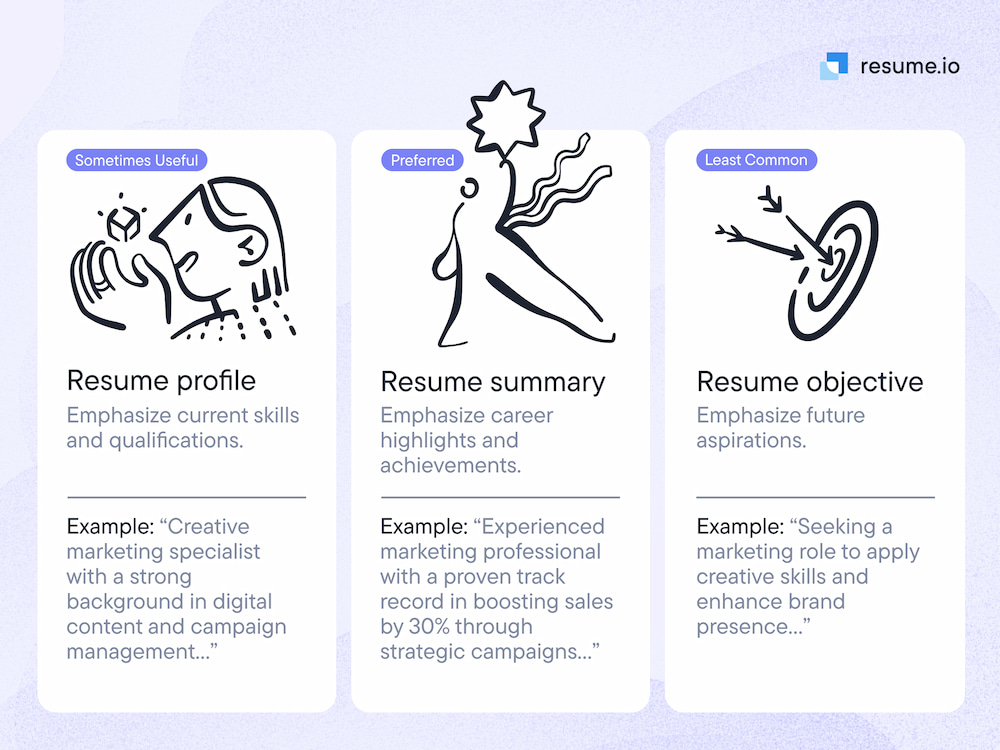
Whichever you choose, keep it short and snappy. You want to grab the reader’s attention immediately. Include action verbs to give your statement more value. You can use the simple past or present tense. Examples include transformed, excelled, and delivered.
If you have a case of writer’s block, don’t panic. Let’s take a look at some copyable examples you can use for inspiration:
Enthusiastic graduate with a foundation in business principles and a passion for sales. Ability to cultivate positive relationships with clients, understand customer needs, and deliver tailored solutions. Excellent communication and negotiation skills, with a track record of achieving sales targets. Seeking a role in a dynamic sales team and the chance to grow within a reputable company.
Sales professional with over 5 years of experience in developing and executing strategic plans driving revenue growth by 17% each year. Proven track record in cultivating strong client relationships, identifying market opportunities, and utilizing CRM software.
Senior Sales Executive with over 10+ years of experience in leading high-performing sales teams. Confident in developing innovative strategies to drive business growth. Proven track record in surpassing sales targets by 20% each quarter, expanding market share, and cultivating long-term client relationships. Recognized for strong leadership skills, strategic planning, and the ability to inspire and motivate teams to achieve excellence.
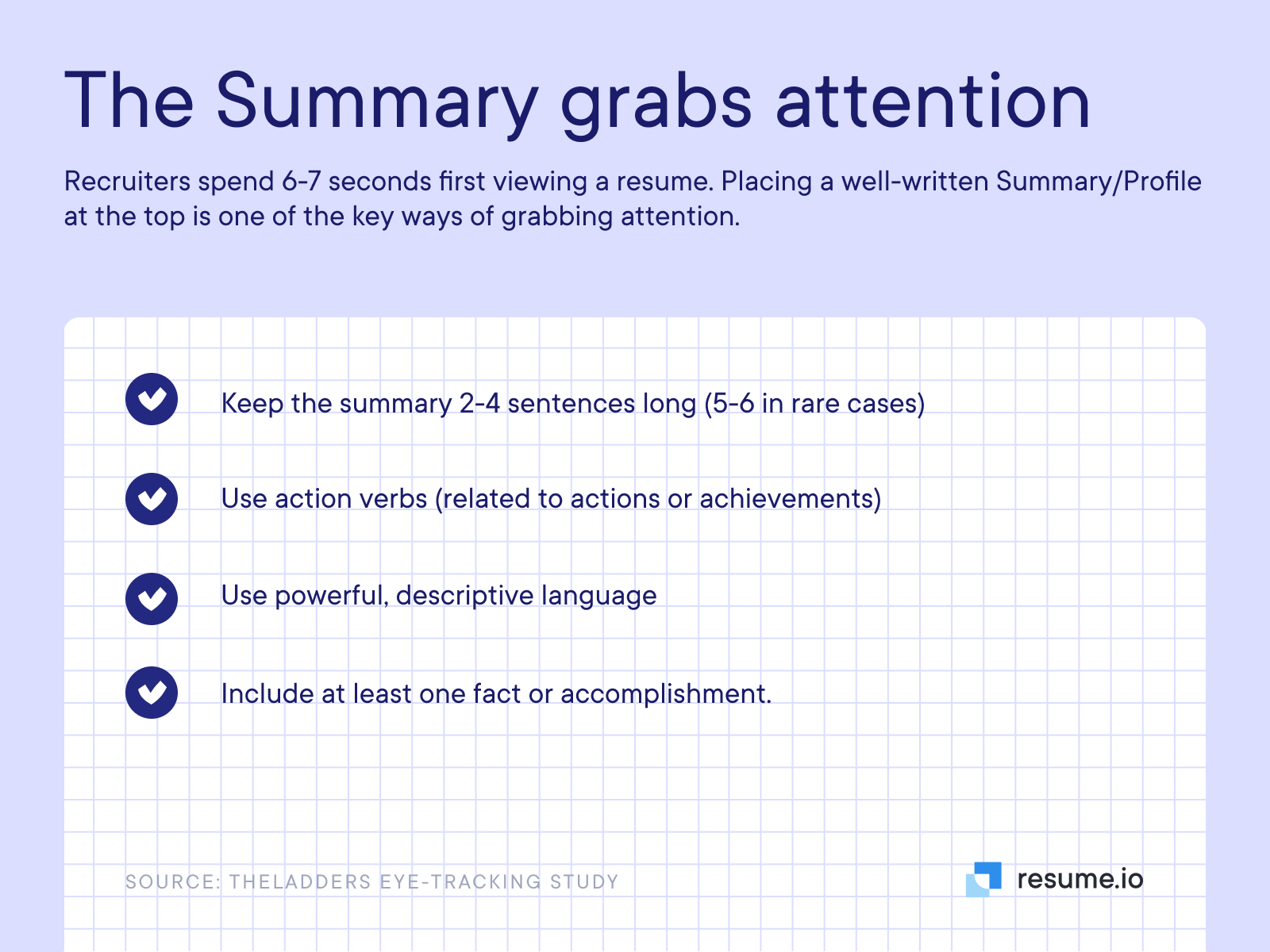
Not sure whether to opt for a resume or summary? There’s a right and wrong time to use each of these. Read our complete guide to help you make the decision now.
Add some flair to your summary or objective!
Pique the hiring manager’s interest by using creative adjectives. While these descriptors should be used sparingly, they can make your personal statement sound more compelling. Take a look at our ultimate list of 80 of the best resume adjectives now.
Step #3: Work history

When you have perfected either your summary or objective, the next step is adding your work history.
The golden rule is that you should detail up to 10-15 years' worth of experience. If you have been in the sector for longer than that, you don’t need to include older positions.
Use the reverse-chronological order when listing your positions. Include the basic information for each job: e.g. the company name, location, your position, and your dates of employment.
Below that, include bullet points that offer more detail. List results-based points that highlight the impact that you made in each case. Here are some examples:
- “Oversaw initiatives that led to a 40% increase in annual revenue within the first year.”
- “Managed 20 sales professionals to achieve a 95% client retention rate overall.”
- “Boosted customer satisfaction scores by 20% through new sales approaches.”
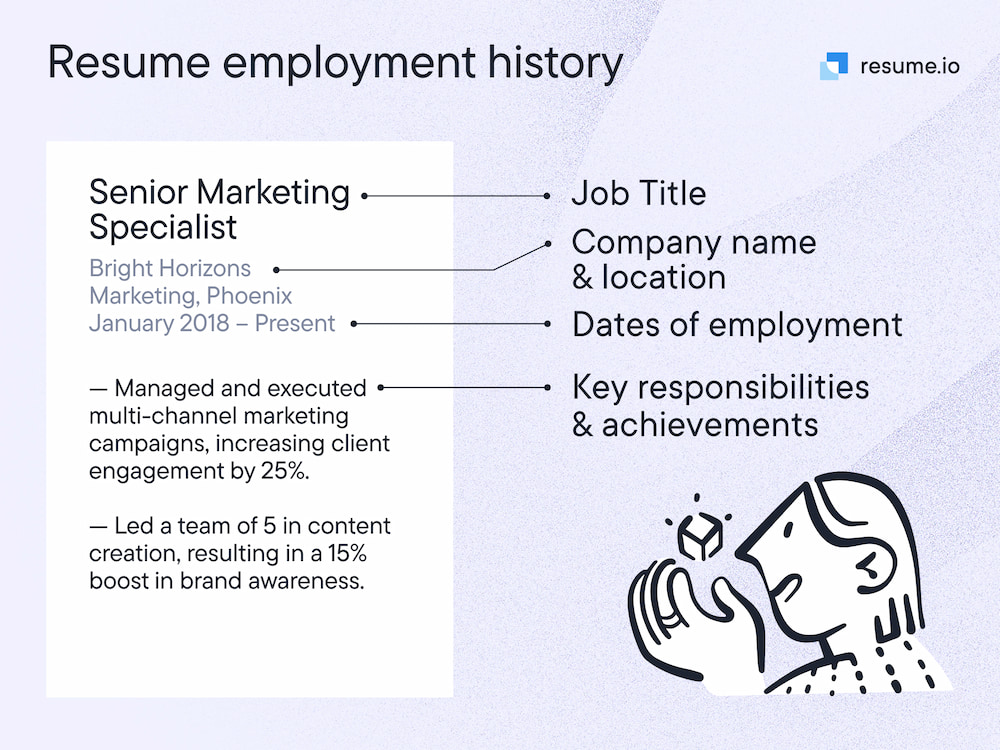
Take a look at our employment history resume sample below:
Sales Manager at Winthrop and Lee, Boulder
November 2014 - Present
- Helped to achieve a 25% increase in sales revenue over the course of 1 year.
- Established sales goals by forecasting annual sales quotas and projecting expected sales volume for existing and new products.
- Effectively monitored competition and appropriately adjusted costs based on supply and demand.
- Managed sales employees and counseled employees based on their professional growth and productivity.
Sales Manager at Lola & Co, Denver
September 2010 - October 2014
- Successfully managed a sales team of 10+ people to meet and achieve sales goals.
- Developed and implemented sales plans to expand customer base and increase customer retention.
- Presented sales, revenue, and expense reports to management teams.
- Researched competition and developed strategies to stand out as a company against competitors.
- Monitored the performance of sales team members and worked to increase team morale and motivation.
Sales Associate at The Mighty East, Denver
August 2008 - August 2010
- Always provided excellent customer service.
- Checked prices and promotional rates for customers.
- Answered customer questions and concerns.
- Helped increase customer retention by striving to create wonderful customer experiences.
- Worked with the mission of the company in mind and served as a dedicated and enthusiastic part of the sales team.
Step #4: Skills section
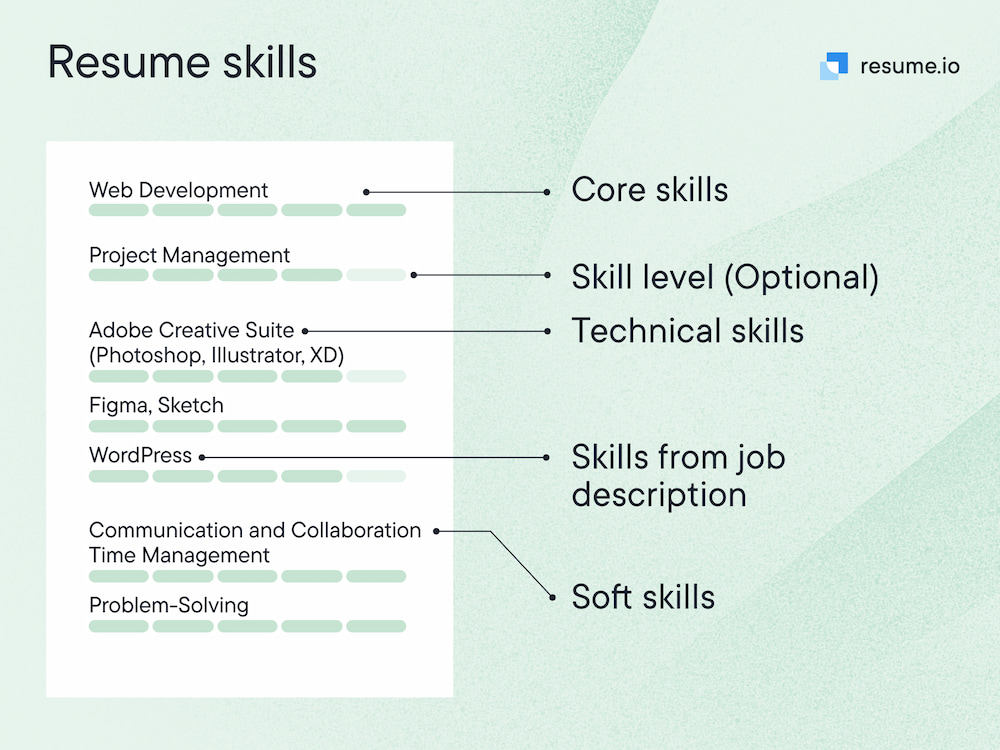
Winning resumes need a mixture of hard and soft skills. Including both of these shows the hiring manager that you are a well-rounded candidate.
Hard skills—often known as technical skills—relate directly to the industry or role. These may involve training you’ve had on the job or how to use certain systems, software, or tools.
Soft skills—on the other hand, span industries. You can use these in a wide selection of roles, which is why they are often called transferable skills. Examples include customer service, communication skills, time management, organization, and interpersonal skills.
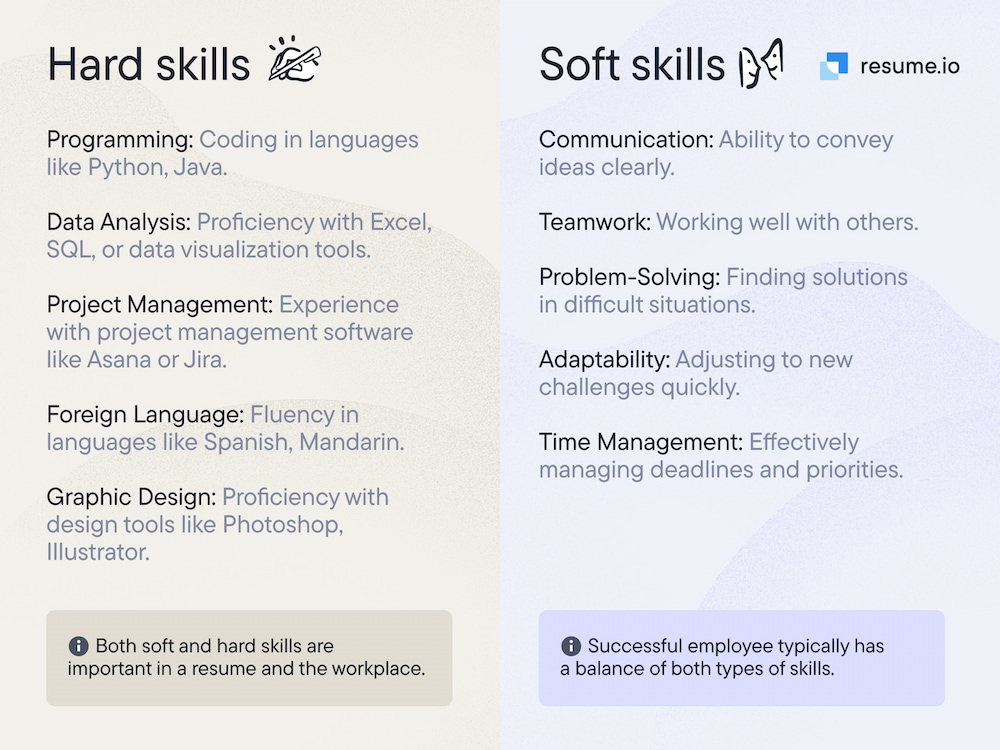
While you may be competent in a wide selection of skills, we recommend listing 6-8 skills on your resume. Make sure that the ones you choose align with the demands of the vacancy.
Top skills for common professions
If you don’t know where to start when listing your key skills, refer back to the job posting.
You can also take a look at our top skills for common professions here:
| Teacher | Customer service | Registered nurse | Accountant | Student |
| Ability to Work in a Team | Customer Service | Patient Advocacy | Leadership | Strong Organizational Skills |
| Communication Skills | Ability to Work in a Team | Teamwork Skills | Interpersonal Skills | Excellent Customer Service Skills |
| Excellent Communication Skills | Communication Skills | Strong Interpersonal Communication Skills | Management | Communication Skills |
| Adaptability | Fast Learner | Knowledgeable in Medical Terminology and Procedures | Recruiting | Ability to Work in a Team |
| Classroom Management | Ability to Work Under Pressure | Trauma and ER Experience | Communication Skills | Advanced Computer System Skills |
| Effective Time Management | Computer Skills | Effective Time Management | Microsoft Office | Fast Learner |
| Fast Learner | Ability to Multitask | Ability to Work in a Team | Microsoft Excel | Customer Service |
| Ability to Work Under Pressure | Adaptability | Ability to Work in a Team | Effective Time Management | Ability to Work Under Pressure |
| Computer Skills | Effective Time Management | Ability to Work Under Pressure | Ability to Work in a Team | Adaptability |
| Curriculum and Instruction | Microsoft Office | Communication Skills | Ability to Work Under Pressure | Effective Time Management |
Our resume builder offers several pre-written key skills to choose, and you can also add your own. When you have done so, set the proficiency level for each skill, as shown below:
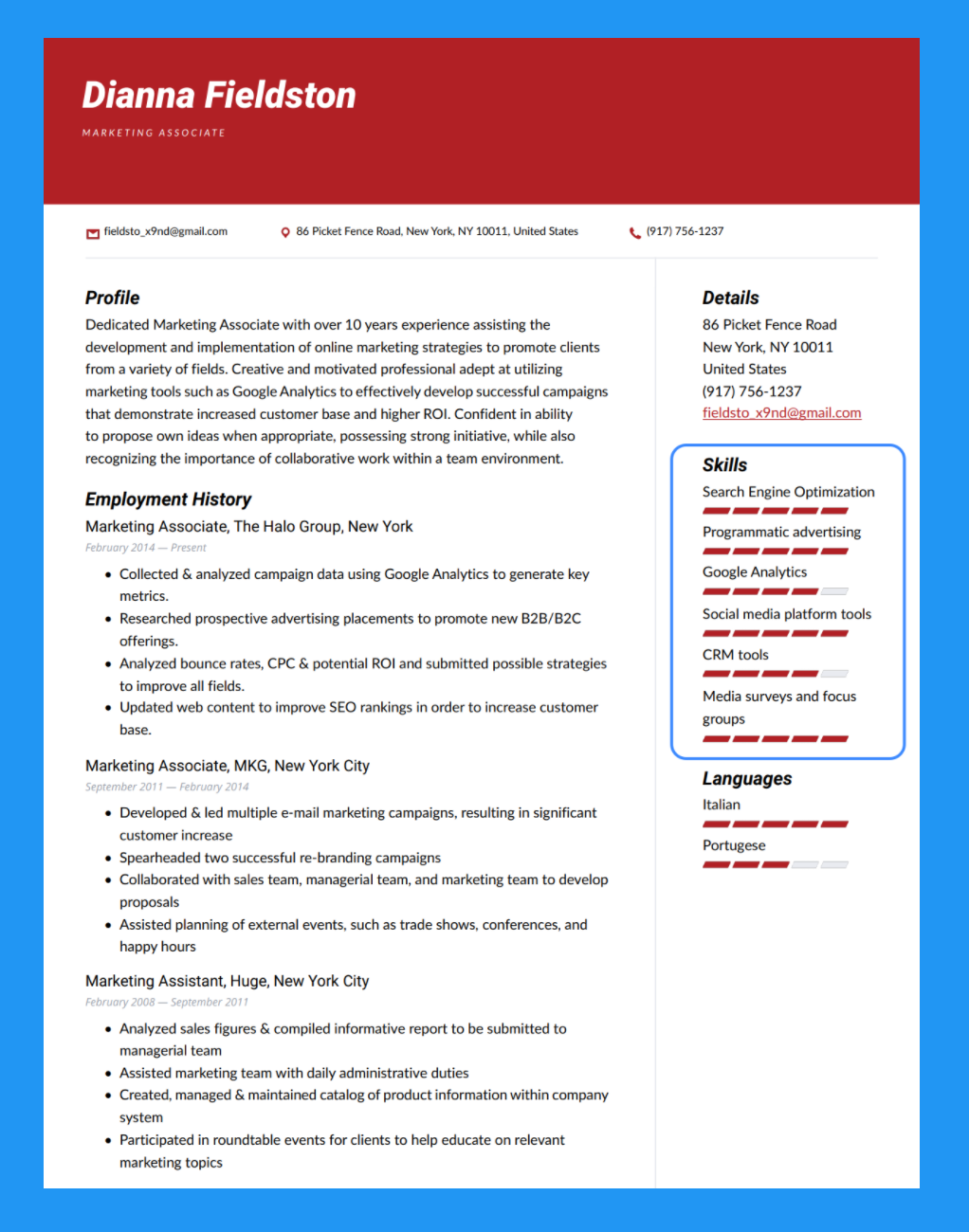
Step #5: Education
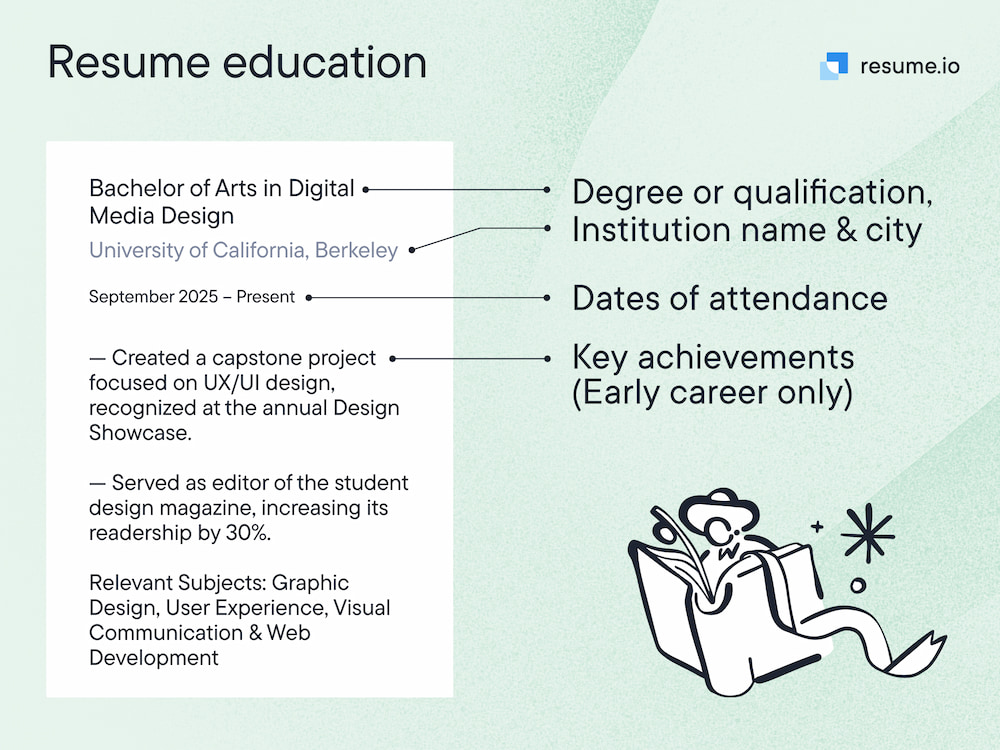
Showcasing your education on your resume doesn't have to be hard. Most of the time, you should use a reverse-chronological order here. Include the name of the institute, the location, the years you attended (or when you received the qualification), and your final grade.
Above all else, make sure that the certificates you include align with the position for which you are applying. If you don’t know where to start, here are examples of what you can include:
- High school diploma. If you don’t have a college degree, include your high school diploma and grade, typically spanning from 9 to 12.
- Bachelor’s degrees. Include any college degrees you have. You should list your major—and any minor subjects—as well as your final grade or GPA.
- Master’s degrees. If you have a master’s degree, such as an MBA, you should list it in this section. It is likely to put you ahead of the competition. Consider adding your graduation date too.
- Training or courses. If you have undertaken any learning and development courses in your spare time or at work, you should list it in this part of your resume.
- Internships. Within some industries, internships are commonplace. Provide details of the company with which you completed your internship.
Certifications and Licenses
Certifications and licenses can set your resume apart from the crowd. Rack your brain and make sure that you don’t miss any of these.
You can list these within your resume header, summary, education section, dedicated section, or as a bullet point within your work experience section.

When listing these on your resume, you need to include the following:
- Certificate name (and abbreviation)
- Issuing body and/or location
- Date issued
- Expiration date and/or renewal date
The type of certificates or licenses you have will depend on your industry. Let’s take a look at some of the most valuable options for popular careers.
Marketing
- Google Analytics Individual Qualification (GAIQ)
- Adobe Certified Expert (ACE)
- Certified Marketing Professional (CMP)
- Facebook Blueprint Certification
- American Marketing Association (AMA) Professional Certified Marketer (PCM)
- Marketing Management Professional (MMP) from the Digital Marketing Institute
- Certified Social Media Marketer (CSMM)
- Search Engine Optimization (SEO) Certification
Customer services
- Certified Customer Service Professional (CCSP)
- Customer Service Certification (CSC) by the International Customer Service Association (ICSA)
- Certified Call Center Manager (CCCM)
- Certified Customer Experience Professional (CCEP)
- Certified Customer Service Specialist (CCSS)
Registered nurse
- National Council Licensure Examination (NCLEX-RN)
- Certified Nurse Practitioner (CNP)
- Certified Nurse Anesthetist (CRNA)
- Certified Nurse Midwife (CNM)
- Clinical Nurse Specialist (CNS)
- Certified Pediatric Nurse (CPN)
- Certified Gerontological Nurse (CGN)
Accountant
- Certified Public Accountant (CPA)
- Certified Management Accountant (CMA)
- Certified Internal Auditor (CIA)
- Certified Fraud Examiner (CFE)
- Certified Government Financial Manager (CGFM)
- American Institute of CPAs (AICPA)
- Institute of Internal Auditors (IIA)
- Association of Government Accountants (AGA)
IT
- AWS Certified Solutions Architect – Professional
- Certified Data Privacy Solutions Engineer (CDPSE)
- Cisco Certified Internetwork Expert (CCIE)
- Cisco Certified Network Associate (CCNA)
- Cisco Certified Professional Network Professional (CCNP)
- Microsoft Certified Azure Solutions Architect
- Microsoft Certified Solutions Associate (MCSA)
- Oracle Certified MySQL Database Administrator (CMDBA)
Hospitality and catering
- ServSafe
- ManageFirst
- National Registry of Food Safety Professionals
- Learn2Serve
- National Environmental Health Association
- American Hotel & Lodging Educational Institute
Construction
- National Council of Examiners for Engineering and Surveying (NCEES)
- American Concrete Institute (ACI) Certification
- Green Building Certification (LEED)
- Crane Operation Certification
- Construction Management Association of America—Certified Construction Manager (CCM)
Be sure to check out the most valuable licenses and certificates for your career. If you don’t already have them, it may be worth pursuing them to increase your employability.
Step #6: Optional sections
If you have completed all of the above steps, you should be on the right track. However, adding extra information to your resume could bolster your application.
Whether you take this step will depend on your experience and the space you have left on your document.
- Awards. If you have received any awards that relate to your career, you may want to include them in their own section. List the award, the body, and the date you received it.
- Publications. You may have been featured in industry publications. Creating a separate section allows you to list a few. Include the publication date, name of the publication, and the article title. You may also choose to add a hyperlink to the article, if it’s online.
- Voluntary work. If you have volunteered—and it’s relevant to your career—you can create a separate section for this. You may also want to include this in your work experience section. Should you do so, make it clear it was a voluntary position.
- Hobbies. If you have any hobbies or interests that will further your application, you can create a section for them. However, beware of wasting space with this addition.
- References. While including references is not common these days, there are some industries where it is expected. List the contact details of each referee in a section.
- Languages. Do you speak a second language? If so, you may choose to create a small section for this on your resume. You can also list it as a skill in your skills section.

Think long and hard about which of these sections you should include. It’s not just about filling the space on the page. Everything you add should have real value to the reader.
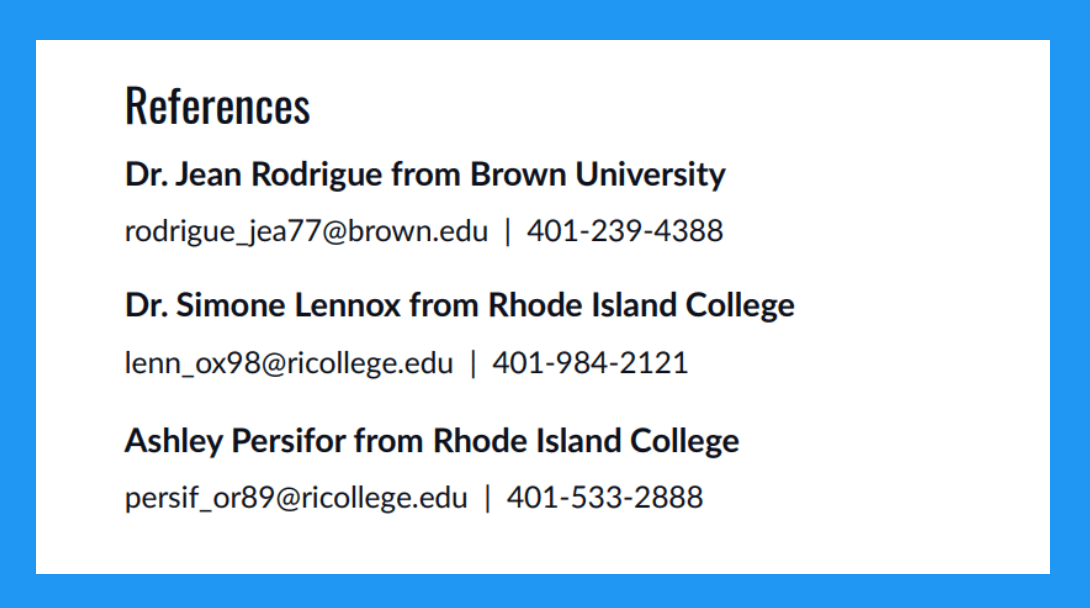
Resume optimization
Now that you have the basics down on paper, it’s time to optimize your resume. There are a few ways that you can take your resume to the next level and increase your chances of success.
Use keywords and phrases throughout
Most companies now use Applicant Tracking Systems (ATS) to rank incoming applications. The software reviews each resume and scores it based on how well it aligns with the job description.
If you don’t pass the ATS, your resume may never be seen by humans, even if it is eye-catching. To boost your chances of beating the bots, include keywords and phrases.
Return to the original job advert and review the content. Pick out any words that relate directly to the vacancy. These may include the core competencies, for example. Weave these words throughout your resume in a natural way.
Include action verbs in your resume
Action verbs highlight your value to the hiring manager. Including them in your resume can change the tone of the document, showing that you have what it takes to succeed.
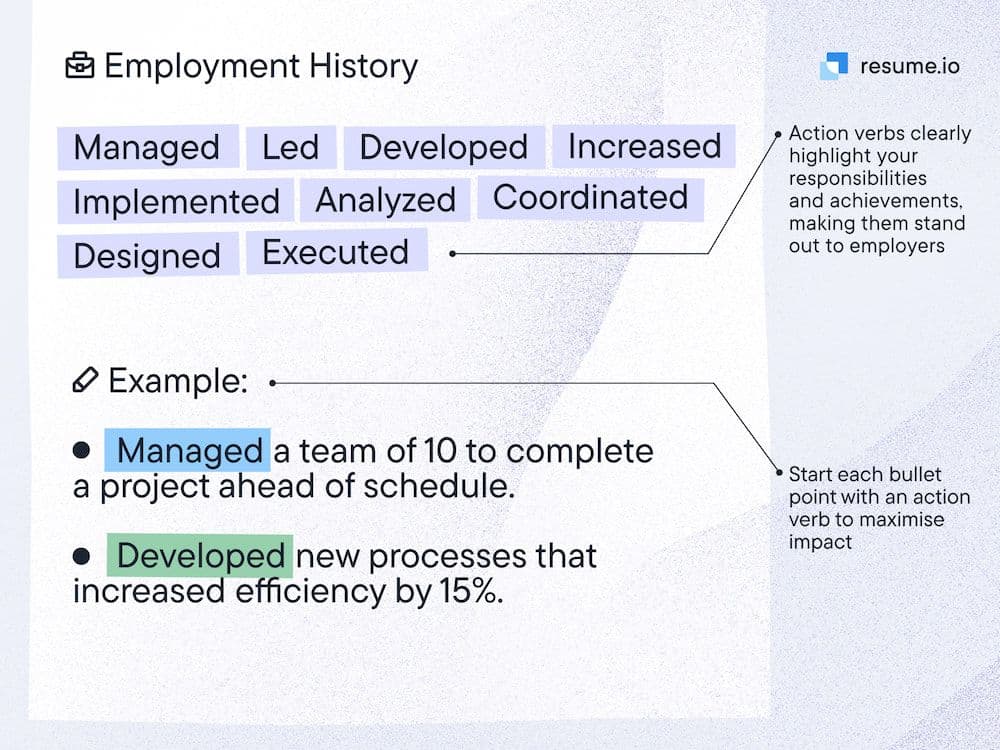
Consider which action verbs align with your career history. Editing the content of your resume to feature these words is a quick way to position you as a top candidate for employers.
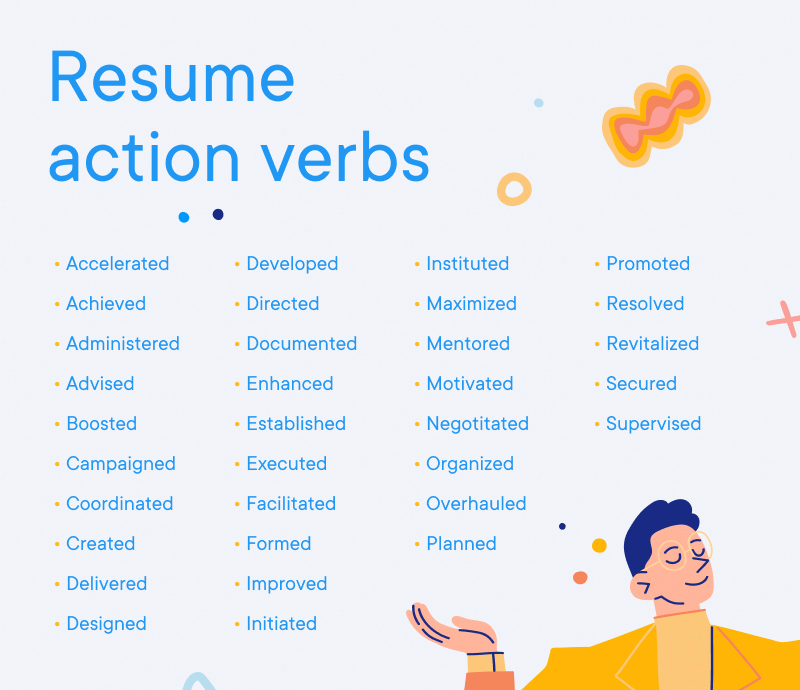
Focus on your achievements and results
Hiring managers want to know one thing—what you can offer them. By focusing your resume on the achievements you have, you can give them a straight answer. Wherever possible, include solid facts. You can use these in your work experience and summary sections.
Be sure to quantify each of your achievements. You can do this by including statistics and facts throughout. For example, rather than simply saying that you have a “proven track record of success,” use a statistic to show the hiring manager that this is the case.
Tailor your resume to the job description
Using the same resume for every vacancy is a mistake. To help you land your next job interview, you need to tailor your resume to the job description. That means taking the time to understand what the hiring manager needs and ensuring that your application meets that demand.
It’s not simply about using the right keywords (although that is important!). You also need to speak the same language as the hiring manager. Make sure that your resume mirrors the professional tone of the job posting as well as including the essential criteria.
Formatting your resume

Looks matter more than you might expect. When it comes to formatting your resume, you need to get it right from the start. That means choosing an effective layout, template, and style.
Luckily, you can use our resume builder tool to make the process easy. We have five template categories from which to choose: Simple, ATS, Modern, Creative, and Professional.
The aim of the game is to grab the hiring manager’s attention. Your resume should be easy to read.
If you put any obstacles in the reader’s way, there’s a good chance they will discard your application. For that reason, you need to learn the basic design rules before you get started.
Simple formatting and design tips
- Make sure that the margins are spaced correctly throughout
- Choose one or two colors that reflect your professional personality
- Pick an easy to read font and use it consistently on your resume
- Select the right resume paper if you plan to print your document
- Consider a two-column resume if you need to make the most of the space where a one-column layout won't work
- Try to cram too much information onto your resume
- Include unnecessary graphs, imagery, or other design elements
- Go for an overly creative design if you have a professional career path
- Forget that the font size should be 10-12 points for body content
- Go overboard with borders, background images, or pictures
Getting the visual elements of your resume right is an absolute must. If in doubt, it’s always smart to use one of our field-tested resume templates.
Resume examples
Looking for some creative inspiration? We have you covered. Let’s take a look at some of our most popular resume examples:
- Teacher resume example
- Technician resume example
- Shop assistant resume example
- Retail manager resume example
- Lawyer resume example
- Plumber resume example
- Call center agent resume example
- Office assistant resume example
- Business manager resume example
- Human resources resume example
- HR director resume example
Want to know what not to do? Take a look at our bad resume examples now. Avoid making simple mistakes that could cost you your next job opportunity.
Finalizing the resume
When you are happy with the content of your resume, you need to finalize it. Start by thoroughly proofreading the document. You can use a tool, such as Grammarly, to help you out here.

You may also want to share your resume with peers. Coworkers, friends, and former managers could help you with this part of the process. Ask for constructive criticism and use it.
Once you have finished, save your file as a PDF, Google Doc, or Docx. Make sure that you pick an appropriate file name for your resume, such as “Your name_resume”.
Resume writing tips
You’re almost done! Before you start working on your resume, take a look at some of the ways that you could boost its potential. Here are some simple resume writing tips.
- Cut out any jargon. Use simple language that the hiring manager can understand.
- Incorporate keywords. Pepper your resume with keywords and phrases.
- Quantify your results. Always provide evidence for the achievements you’ve made.
- Add creative language. Include some action verbs and creative adjectives.
- Create a matching cover letter. Write a cover letter that suits your resume perfectly.
- Avoid silly mistakes. Always proofread your resume before you submit it.
- Update your resume. Regularly review and update your resume content.
- Consider a resume writer. Get a professional resume writer to review or help write your resume.
Read more about how to perfect this art in our comprehensive resume tips guide.
Resume writing frequently asked questions
What makes a good resume?
To make a good resume, always tailor it to the job description. You can include action verbs, results-based points, and creative adjectives throughout, too.
What is the first thing you do when writing a resume?
The first thing you should do when writing a resume is gather the information you need. This approach will save you time and energy later.
How to write a resume with no experience?
To write a resume with no experience, focus on your transferable skills. Highlighting these will show the hiring manager that you have the talents you need to succeed.
How far back should a resume go?
Resumes should go back no longer than 10-15 years.
What are the 4 C's of resume writing?
The four C’s of resume writing are clear, concise, correct, and compelling. Make sure that your resume ticks all of these boxes.
How to write a resume quickly?
To write a resume quickly, make sure you plan in advance. Gather the information you need and use it when writing.
Avoid the temptation to rely solely on ChatGPT to write your resume. While the AI software can provide some support, you need to tailor your resume yourself. Our AI resume builder is the ideal tool, delivering speed and insights tailored to your experience.
Should I include a picture in my resume?
You can include a profile picture in your resume. However, don’t include unnecessary imagery or pictures that don’t add anything to your application.






































